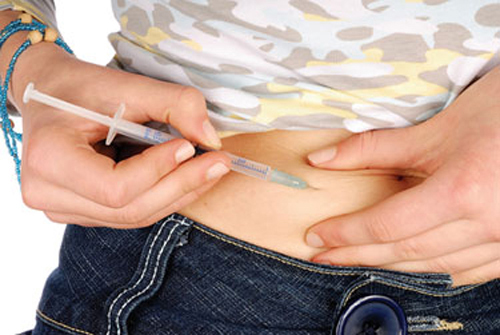People with diabetes take insulin to lower high blood sugar. However, if glucose levels plunge too low—from taking too much insulin or not eating enough sugar—people can experience hypoglycemia, which can lead to dizziness, cognitive impairment, seizures or comas. Emergency treatment with the hormone glucagon (GCG) may be needed. Researchers at the University of California, Los Angeles (UCLA) have now developed a method to encapsulate glucagon in glucose-responsive micelles that only release the hormone when blood glucose levels become too low. Tests in mice confirmed that the injected nanocapsules activated only when blood sugar levels dropped dangerously low, and quickly restored glucose levels.
Research leads Andrea Hevener, PhD, Heather Maynard, PhD, and colleagues reported on their developments in ACS Central Science, in a paper titled “A Glucose-Responsive Glucagon-Micelle for the Prevention of Hypoglycemia.” In their paper the team concluded, “This proof-of-concept work is the first step toward development of a translational, stimuli-responsive glucagon delivery platform to control glycemia.”
Diabetes is a metabolic disorder caused by a decline in the function of insulin-producing beta-cells in the pancreas (type 1 diabetes) or by peripheral insulin resistance and reduced beta-cell mass (type 2 diabetes), the authors explained. The two disorders affect more than 500 million people worldwide, a figure that is projected to rise to 1.3 billion by 2050.
While insulin treatment in diabetic patients is extremely effective in lowering blood glucose from dangerous highs, the authors continued, episodes of moderate to severe hypoglycemia are common clinical complications. Glucagon injections may be necessary to counteract severe hypoglycemia in people who have diabetes. “Glucagon (GCG) is an endogenous peptide that raises blood glucose levels by activating hepatic gluconeogenesis and glycogenolysis,” they explained.
While an emergency glucagon injection can correct blood sugar levels in about 30 minutes, formulations can be unstable and insoluble in water. In some cases the hormone quickly breaks down when mixed for injections and clumps together to form toxic fibrils. Additionally, many hypoglycemic episodes occur at night, when people with diabetes aren’t likely to test their blood sugar.
Researchers are working to advance glucagon delivery systems, Hevener and the colleagues noted, but most efforts have been focused on emergency treatments for patients already experiencing low levels of glucose. “A paradigm shift in the glucagon treatment strategy would be to prevent hypoglycemia altogether,” they suggested. And while glucose-responsive insulin delivery systems are in widespread clinical use to treat insulin insufficiency, the on-demand supplementation of glucagon for acute hypoglycemia treatment isn’t well studied. “A self-regulated glucagon release material is highly desired to mitigate the potential risks of severe insulin-induced hypoglycemia.”
To improve commercial glucagon stability and prevent hypoglycemia, the investigators turned to micelles. These nanoscale, soap-like bubbles can be customized to assemble or disassemble in different environments, and are used for drug delivery. The team developed a glucose-responsive micelle that could encapsulate and protects glucagon in the bloodstream when sugar levels are normal, but dissolve and release its glucagon cargo if glucose levels drop dangerously low. To prevent hypoglycemia, such micelles could be injected ahead of time and circulate in the bloodstream until needed.
In lab experiments the researchers observed that the micelles disassembled only in liquid environments that mimicked hypoglycemic conditions—less than 60 milligrams of glucose per deciliter—in human and mice bodies. In healthy mice experiencing insulin-induced hypoglycemia, an injection of the glucagon-encapsulating micelles led to normal blood sugar levels within 40 minutes. The team also determined that glucagon-packed micelles stayed intact in mice and didn’t release the hormone unless blood glucose levels fell below the clinical threshold for severe hypoglycemia.
“Glucagon-loaded micelles injected into mice prevented or reversed deep hypoglycemia when administered prior to or during an insulin challenge. Glucagon release was only observed at or below the counterregulatory threshold and not during normoglycemia or moderate hypoglycemia.”
Additional toxicity and biosafety studies in mice indicated that the empty micelles didn’t trigger an immune response or induce organ damage. “… acute and chronic toxicity analyses in vivo along with μPET/μCT imaging demonstrated a favorable safety profile of this formulation, showing no organ accumulation,” the researchers noted.
While more studies are needed, they say that their initial proof-of-concept is a first step toward a new on-demand and effective method for preventing or mitigating extremely low blood sugar levels. “In conclusion, these experimental results indicate that the GCG micelle could be used to avert the onset of insulin-induced deep hypoglycemia as a responsive system,” they stated. “… these studies highlight the potential for a glucagon formulation to manage glycemia by pre- or coadministration of glucagon-micelles with insulin.”



